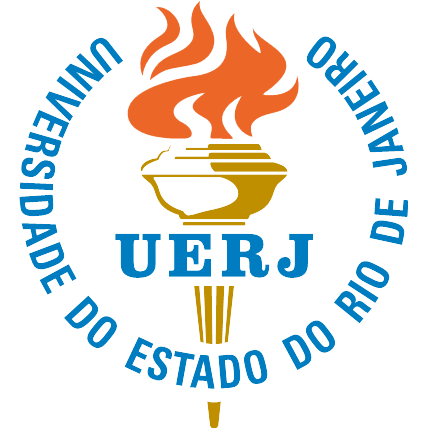Leprosy health technologies in Primary Health Care: a scoping review
DOI:
https://doi.org/10.12957/reuerj.2024.79681Keywords:
Primary Health Care, Leprosy, Technology, Information TechnologyAbstract
Objective: to map health technologies for managing the care of people with leprosy in Primary Health Care. Method: scoping review based on the JBI methodology in six databases, following the Preferred Reporting Items for Systematic Reviews and Meta-Analyses extension for Scoping Reviews checklist. Studies published in any language were included, with different methodological approaches. Results: the 14 studies included in the review show that the applicability of technologies for the management of care for people with leprosy in Primary Health Care makes it possible to confirm diagnosis, follow-up, monitoring, and prevention of disabilities. Conclusion: it has been noted that health technologies are tools that help in the process of caring for people with leprosy, to provide health professionals with knowledge about the disease, improving quality of health practice.
References
Ministério da Saúde (Br). Secretaria de Vigilância em Saúde. Departamento de Vigilância das Doenças Transmissíveis. Guia prático sobre a hanseníase. Brasília: Ministério da Saúde. 2017 [cited 2023 Oct 10]. Available from: https://bvsms.saude.gov.br/bvs/publicacoes/guia_pratico_hanseniase.pdf.
Ministério da Saúde (Br). Secretaria de Saúde do Estado do Ceará. Núcleo de Vigilância Epidemiológico. Nota Técnica da hanseníase. 2018 [cited 2023 Oct 10]. Available from: https://www.saude.ce.gov.br/wp-content/uploads/sites/9/2018/06/nota_tecnica_hanseniase_1_2_2018_2.pdf.
Araújo WCO. Recuperação da informação em saúde: construção, modelos e estratégias. Conv Ciênc Inform. 2020 [cited 2023 Jun 13]; 3(2):100-34. DOI: https://doi.org/10.33467/conci.v3i2.13447.
Áfio ECA, Balbino AC, Alves MDS, Carvalho LV, Santos MCL, Oliveira NR. Analysis of the concept of nursing educational technology applied to the patient. Rev Rene. 2014 [cited 2023 Jun 13]; 15(1):158-65. DOI: https://doi.org/10.15253/2175-6783.2014000100020.
Arksey H, O’Malley L. Scoping studies: towards a methodological framework. Int J Soc Res Methodol. 2005 [cited 2023 Jun 13]; 8(1):19-32. DOI: https://doi.org/10.1080/1364557032000119616.
Tricco AC, Lillie E, Zarin W, O'Brien KK , Colquhoun H, Levac D, et al. PRISMA Extension for Scoping Reviews (PRISMA-ScR): checklist and explanation. Ann Intern Med. 2018 [cited 2023 Jun 13]; 169(7):467-73. DOI: https://doi.org/10.7326/M18-0850.
Ouzzani M, Hammady H, Fedorowicz Z, Elmagarmid A. Rayyan—a web and mobile app for systematic reviews. Syst Rev. 2016 [cited 2023 Jun 13]; 5:210. DOI: https://doi.org/10.1186/s13643-016-0384-4.
Duarte MTC, Ayres JÁ, Simonetti JP. Consulta de enfermagem ao portador de Hanseníase: proposta de um instrumento para aplicação do processo de enfermagem. Rev Bras Enferm. 2008 [cited 2023 Jun 13]; 61:767-73. DOI: https://doi.org/10.1590/s0034-71672008000700019.
Duarte MTC, Ayres JÁ, Simonetti JP. Consulta de enfermagem: estratégia de cuidado ao portador de hanseníase em atenção primária. Texto Contexto Enferm. 2009 [cited 2023 Jun 13]; 18(1):100-7. DOI: https://doi.org/10.1590/S0104-07072009000100012.
Bernardes Filho F, Silva CML, Voltan G, Leite MN, Rezende ALRA, Paula NA, et al. Active search strategies, clinicoimmunobiological determinants and training for implementation research confirm hidden endemic leprosy in inner São Paulo, Brazil. PLoS Negl Trop Dis. 2021 [cited 2023 Jun 13]; 15(6):e0009495. DOI: https://doi.org/10.1371/journal.pntd.0009495.
Lanza FM, Vieira NF, Oliveira MMC, Lana FCF. Evaluation of the primary care in leprosy control: proposal of an instrument for users. Rev Esc Enferm USP. 2014 [cited 2023 Jun 13]; 48(6):1051-8. DOI: https://doi.org/10.1590/S0080-623420140000700013.
Lanza FM, Vieira NF, Oliveira MMC, Lana FCF. Instrument for evaluating the actions of leprosy control in Primary Care. Rev Bras Enferm. 2014 [cited 2023 Jun 13]; 67(3):339-46. DOI: https://doi.org/10.5935/0034-7167.20140044.
Rachmani E, Lin MC, Hsu CY, Jumanto J, Iqbal U, Shidik GF, et al. The implementation of an integrated e-leprosy framework in a leprosy control program at primary health care centers in Indonesia. Int J Med Inform. 2020 [cited 2023 Jun 13]; 140:104155. DOI: https://doi.org/10.1016/j.ijmedinf.2020.104155.
Rachmani E, Hsu CY, Chang PWS, Jumanto J, Fuad A, Ningrum DNA, et al. Encouraging on-time completion of leprosy patients treatment: implementing e-leprosy framework to primary health care in Indonesia. Asia Pac J Public Health. 2019 [cited 2023 Jun 13]; 31(4):296-305. DOI: https://doi.org/10.1177/1010539519847355.
Carrion C, Robles N, Sola-Morales O, Aymerich M, Postigo JAR. Mobile health strategies to tackle skin neglected tropical diseases with recommendations from innovative experiences: systematic review. JMIR Mhealth Uhealth. 2020 [cited 2023 Jun 13]; 8(12):e22478. DOI: https://doi.org/10.2196/22478.
Ukpe IS. Educational posters and leaflets on leprosy: raising awareness of leprosy for health-care workers in rural South Africa. Public Health Rep. 2008;123(2):217-21. DOI: https://doi.org/10.1177/003335490812300215.
Baweja HS, Parhar T. Leprosy lesion recognition using convolutional neural networks. Int Conf Mach Lear Cybern. 2016 [cited 2023 Jun 13]; 1:141-5. DOI: https://doi.org/10.1109/icmlc.2016.7860891.
Pai VV, Pai RB. Artificial intelligence in dermatology and healthcare: An overview. Indian J Dermatol Venereol Leprol. 2021 [cited 2023 Jun 13]; 87(4):457-67. DOI: https://doi.org/10.25259/IJDVL_518_19.
Kanthraj GR. Classification and design of teledermatology practice: what dermatoses? Which technology to apply? J Eur Acad Dermatol Venereol. 2009 [cited 2023 Jun 13]; 23(8):865-75. DOI: https://doi.org/10.1111/j.1468-3083.2009.03136.x.
Mukherjee J, Majumdar AK, Bandyopadhyay A, Acharya B, Reddy MU, Nayak A. Telemedicine for Leprosy. IETE Tech Rev. 2001 [cited 2023 Jun 13]; 18:(4):243-52. DOI: https://doi.org/10.1080/02564602.2001.11416970.
Leite TRC, Silva IGB, Lanza FM, Maia ER, Lopes MSV, Cavalcante EGR. Ações de controle da hanseníase na atenção primária à saúde: uma revisão integrativa. VITTALLE. 2020 [cited 2023 Jun 13]; 32(3):175-86. DOI: https://doi.org/10.14295/vittalle.v32i3.11080.
Vieira NF, Félix Lana FC, Rodrigues RN, Niitsuma ENA, Lanza FM. Avaliação da atenção primária: comparativo entre o desempenho global e as ações de hanseníase. Rev Enferm Cent O Min. 2019 [cited 2023 Jun 13]; 9:e2896. DOI: http://dx.doi.org/10.19175/recom.v9i0.2896.
Resende JVM, Silva JLL, Soares RS, Miranda PS, Costa FS, Abreu WO, et al. Mobile apps in healthcare: an integrative review. Res Soc Develop. 2022 [cited 2023 Jun 13]; 11(11):e278111133481. DOI: http://dx.doi.org/10.33448/rsd-v11i11.33481.
Nobre PFR, Pedreira NP, Sousa LCB, Castro NJC. Construção de uma cartilha sobre autocuidado da hanseníase em contexto amazônico. Rev Recien. 2022 [cited 2023 Jun 13]; 12(38):238-46. DOI: https://doi.org/10.24276/rrecien2022.12.38.238-246.
Feitosa MCR, Stelko-Pereira AC, Matos KJN. Validation of Brazilian educational technology for disseminating knowledge on leprosy to adolescents. Rev Bras Enferm. 2019 [cited 2023 Jun 13]; 72(5):1333-40. DOI: https://doi.org/10.1590/0034-7167-2018-0610.
Pinto RMF, Pinheiro RA, Queiroz DT, Mota JVF, Mota FGA, Gonçalves VF, et al. Construção de tecnologia educativa para pessoas acometidas pela hanseníase. Conjecturas. 2021 [cited 2023 Oct 10]; 21(5):920-32. Available from: http://conjecturas.org/index.php/edicoes/article/view/438.
Ramirez-Pereira M, Figueredo-Borda N, Morales EO. Artificial intelligence in care: a challenge for Nursing. Enferm Cuid Hum. 2023 [cited 2023 Oct 10]; 12(1):e3372. Available from: http://www.scielo.edu.uy/pdf/ech/v12n1/en_2393-6606-ech-12-01-e3372.pdf.
Calçada D, Veras V, Calçada J, Bezerra S. Descoberta de padrões no tratamento da hanseníase no estado do Piauí com uso de técnica de Inteligência Artificial Explicável. Rev Concilium. 2022 [cited 2023 Jun 13]; 22(4):527-41. DOI: https://doi.org/10.53660/CLM-374-375.
Andreza MNS, Rats JGB, Diniz CLF, Cartaxo NL, Nascimento JM, Dantas JVS, et al. A telessaúde como instrumento de educação e saúde. Braz J Develop. 2023 [cited 2023 Jun 13]; 9(4):13319-30. DOI: https://doi.org/10.34117/bjdv9n4-051.
Published
How to Cite
Issue
Section
License
Copyright (c) 2024 Rosa Maria Grangeiro Martins, Dailon de Araujo Alves, Sabrina Alaide Amorim Alves, Karine Nascimento da Silva , Raimundo Augusto Martins Torres, Francisca Juliana Grangeiro Martins, Maria Lúcia Duarte Pereira

This work is licensed under a Creative Commons Attribution 4.0 International License.
When publishing in Revista Enfermagem UERJ, the authors declare that the work is their exclusive authorship and therefore assume full responsibility for its content.
Authors retain copyright to their article and agree to license their work using a Creative Commons Attribution International Public License (CC BY), thereby accepting the terms and conditions of this license (https://creativecommons.org/licenses/by/4.0/legalcode.en), which allows material created by the author to be distributed, copied and displayed by third parties. The original work must be cited and present a link to the article available on the website of the journal in which it was published.
The Copyright of the articles published in Revista Enfermagem UERJ belongs to their respective author(s), with the rights of first publication assigned to Revista Enfermagem UERJ, with the work simultaneously licensed under a Creative Commons License CC BY, which allows sharing of work with recognition of authorship and initial publication in this journal.
The authors grant Revista Enfermagem UERJ the right of first publication, to identify themselves as the original publisher of the work and grant the magazine a license of non-exclusive rights to use the work in the following ways:
- Sell and/or distribute the work in printed copies and/or electronic format;
- Distribute parts and/or the work as a whole with the aim of promoting the magazine through the internet and other digital and printed media;
- Record and playback work in any format, including digital media.
In line with the journal's policies, each published article will be assigned a Creative Commons Attribution (CC BY) license.









